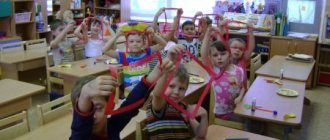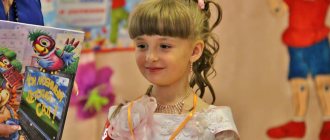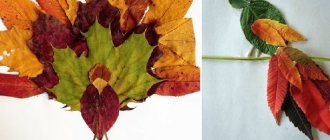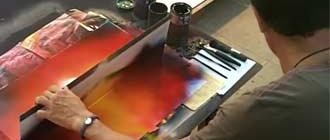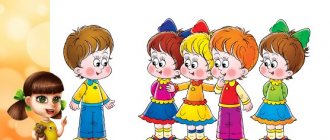Interesting articles
Chess for preschoolers: what is the benefit and how to teach it
To write a summary of a mathematics lesson in a preparatory group, we need to draw up an initial plan. The first and most important thing for classes with preschoolers is to maintain interest throughout the lesson. To do this, we will need a fantastic story or fairy tale, on the basis of which we will build a scenario for a mathematical lesson.
To consolidate knowledge, kids need to solve different problems, we prepare a list and integrate it into the lesson script.
Now we will look in detail at how to make a note, and at the end of the article there will be a ready-made sample.
Why is it necessary to teach mathematics in kindergarten?
Mathematics in kindergarten helps young smart people develop their abilities. Many parents mistakenly believe that people are divided into two types - humanists and mathematicians - and are sincerely perplexed why their smart guy should pore over solving a problem if he draws or dances well. But this is a mistaken opinion. Even if your child has a pronounced talent, knowledge of mathematical fundamentals will only help him to open up. It has been scientifically proven that children who train logical thinking or solve developmental mathematical problems better understand the material of other subjects at school, can find a way out of a difficult situation, and also develop new talents. If you're still skeptical and think that a lot of the math you learned during your studies was never useful to you, remember the basics. Surely you don’t regret that you learned to count and tell time using an analog clock. You need knowledge about interest at the bank when you take out a loan, and the ability to subtract and add will be useful in the store when you pay for purchases.
Since new information is best learned in preschool age, math lessons in kindergarten have a place. This science is difficult for many: they are capricious and refuse to do the exercises. Tell your little one that she will encounter basic mathematics every day in her adult life, because she urgently needs this knowledge. Explain that each problem has a solution, draw a picture to make it more interesting for the child to find the correct answer. Setting up your child to learn mathematics is quite simple. You shouldn’t think that the kindergarten will do this for you, since the leader cannot persuade every fidget to work with her individually. In the evening, ask your little one what he did in kindergarten today, and if the topic was unclear to him, explain and help him figure it out.
Coming up with an idea
Nowadays children actively watch TV, where they show exciting adventures of superheroes. The stores have a lot of toys and games based on Hollywood blockbusters. They also sell various superhero costumes, and on New Year’s holidays many children come wearing these costumes. The children's interest is obvious; they want to imitate these characters, so we will build our script based on the MARVEL heroes.
Since our lesson is mathematics, and the smartest superhero is, of course, Iron Man: Tony Stark. If he had not studied mathematics, he would never have made his suit. And therefore the main character of our lesson will be Tony Stark.
From films we know that iron man always saves the world and makes it better. This time he needed the help of young heroes from our kindergarten.
There is an idea, then you need to write a script, but before that you need to write a list of problems that the guys will solve.
Mathematics Teaching Techniques
The study of mathematics begins in the junior group of kindergarten. The smart guy gains new knowledge in a visually effective way: he listens to the teacher, works with didactic material. Lessons are held in a playful way with the help of toys and surrounding objects. Such activities attract attention. Some topics are explained with examples - comparing things (long and short, wide and narrow). In order to develop accuracy of perception, teachers use movements, for example, using their hands to describe the shape of a particular figure. So that students can compare two objects and know their common features and differences, teachers ask questions. Working with didactic material helps the preschooler to clearly understand the lesson he has learned. At first, the teacher shows the children how to work with cards or abacus, and then gives a task and helps the preschooler with the solution. In order for young smart people to understand what is required of them, the teacher needs to repeat the demonstration of working with auxiliary material several times. If words appear in the teacher’s story that are unfamiliar to the little ones, he repeats them clearly and slowly several times, and then everyone repeats the term after him in unison.
Important! If your child cannot form complex sentences with the conjunctions “and” or “a”, do not ask him questions like “How many pebbles are in the yellow basket, and how many are in the green?” Divide the question into two sentences, and when the baby answers, help her connect the answers into one whole.
Along with this they search and read:
Aggression in preschool children and family parenting styles and their impact on child development
Formation of initial skills in educational activities
In order for toddlers in the younger group of kindergarten to master the skills of learning activities, they are taught to sit in their place, obey the teacher, answer questions, study together with other fidgety children, start and finish certain actions at the same time as other children, and patiently wait their turn in case of emergency. teacher's employment. A good teacher will always praise a child who is making progress and comfort a child who is upset by the lack of progress.
Since it is difficult for a child to sit in one position for a long time, the teacher arranges frequent breaks in the educational process, rather than correcting the little fidgets with comments.
In order to avoid childish insults, each smart guy receives individual didactic material. Educational supplies are provided before classes begin so that children can explore and touch what they will be working with. Before the lesson, instruction is given, which emphasizes careful handling of the given material, as well as proper use.
Account for children
In order to teach the baby to count, educators use auxiliary materials. For initial lessons, you need cubes and cards numbered from one to five. Cards with numbers are laid out at the bottom of the box, and the cubes are placed on top. Next, the teacher points to each cube and clearly pronounces the corresponding number and asks the little one to repeat after him. Next, the teacher asks the baby to show him the cube with the number “One” or put the cube with the number “Three” in the box.
Important! In order for the young smart guy to remember the numbers on the cubes, use cubes of different colors. The baby will focus its attention on a certain color and associate it with a number. This way, it will be easier for her to answer your question or put the cube in the correct place in the box.
A child will remember numbers best if he encounters them as often as possible. Teachers need to ask kids to count everything that surrounds them in the kindergarten: flowers, beds, plates... With each subsequent training, it will be easier for the little one to count, and in the future name the exact number of objects (that is, she will count in her mind). Counting rhymes for memorizing numbers give excellent results:
Conclusions.
Using this outline as an example, you can write your own based on the preferences of your children and based on the knowledge and lessons that you took with them. Don’t do boring and uninteresting lessons based on old fairy tales; modern children don’t even know them and are not interested in them. Keep up with the times and rely on the interests of children.
Do it not for show, but for the delight and joy of the children.
Watch the kids' reaction, as soon as you see happiness in their eyes and keen interest, you know you succeeded!
Everything you need to know about geometric shapes
Children will love learning about geometric shapes if learning is presented in the form of a game. Psychologists say that at the age of two, a toddler should know three shapes: square, triangle and circle, and at the age of three - six (a rectangle, an oval and a rhombus are added to those listed above). To make it easier for students to distinguish shapes, educators should follow the following recommendations:
- Show the children a large image of the figures or their layout to make it more clear.
- Repeat the name several times - this way your child will remember it faster.
- Focus on form.
- Alternate requests to name and show one form or another.
- Educational cartoons on this topic help the baby better understand geometry.
- Explain why the figures have this name, count the angles with it.
- An excellent assistant is the sorter. This toy was created so that the little one could learn to insert a certain geometric object into a special shape.
- Draw shapes and ask your child to repeat after you. If your little one is not doing well, hold his pen in your hand and draw lines.
- Make applications from geometric shapes.
Sample notes for a math lesson for children in kindergarten
Lesson title: “Superhero School”
Purpose of the lesson: To instill an interest in mathematics, to teach children to interact with each other when solving one problem.
Check and consolidate knowledge:
- counting to 10;
- composition of numbers within 10;
- days of the week;
- geometric figures;
- addition and subtraction.
Preliminary work:
Didactic games for sensory development: “Name the figures”, “Building a castle”, “Draw a fairy-tale hero”. Didactic games: “Days of the week”, “What, where?”. Games for attentiveness. Numbers from 1 to 10. Solving simple arithmetic problems, solving logical problems.
During the classes:
Educator:
Guys, today I received an email from Tony Stark. Who knows who this is? This is Iron Man. Since childhood, he loved solving various mathematical problems, became very smart and was able to make an iron man suit himself. If he had not studied mathematics, he would never have been able to design such a suit. He writes that he needs your help. Shall we help him?
First task: Solving the code
Goal: We strengthen the ability to count in the mind and think logically, and understand questions by ear. We repeat the material covered.
Materials: A box with a picture of Iron Man pasted on and a white field for entering the code, a pencil, masks and an envelope with tasks.
Execution: The teacher takes out a box and the children sit around it.
Tony sent me a box of activities and gifts for you. But to open it we need to solve the code, and to do this we need to answer 10 questions, since the code consists of ten digits, we will enter each answer in the input field on the box
The guys take turns answering the questions:
1. How many fingers are there on one hand? (five) 2. How many noses does a person have? (one) 3. How many legs do two cats have? (eight); 4. How many days are there in a week? (seven); 5. How many colors does the traffic light have? (three); 6. What number is between the numbers five and seven (six); 7. How many wheels does the car have? (four); 8. How many tails do two dogs have? (two); 9. Which number is less than 1? (zero); 10. Which number is greater than eight but less than ten? (nine).
We get the number: 5187364209, write it on the box and open it. At this time the music turns on.
Inside the box, an envelope with tasks and an iron man mask for each child.
Music plays, the guys take apart the masks and put them on.
Ready for the next challenge?
City of geometric shapes
Goal: To consolidate the ability to make appliqué from geometric shapes together. The guys work as a team, helping each other. Reinforce your knowledge of geometric shapes. Repeat the composition of the number 10.
Material: A1 sheet of whatman paper, geometric shapes: rectangles, squares, circles, triangles, etc., of different sizes, cut out of colored paper, glue in the form of pencils and paper figures of people.
Performance:
Guys now need to build a city in which Iron Man needs to save all the inhabitants
Children quickly and carefully stick on shapes, creating from ready-made shapes: houses, cars, traffic lights, etc.
Well done guys, now run around the chairs a little while the music is playing, as soon as the music ends you need to quickly sit down in your chair.
When the children run around on the appliqués, the teacher sticks numbers on them.
The music stops and the children take their seats.
Children, we need to remember what numbers the number 10 consists of, find these numbers in our city and stick figures of people of the same color on them. So that Iron Man can quickly fly in and save them.
Children complete the task.
Well done guys, you cope well with all the tasks, Iron Man will probably want to take you to his team of superheroes
Mathematical dictation
Goal: To consolidate the ability to perceive numbers and directions of movement by ear; you need to count the distance on squared paper.
Materials: notebook sheet of checkered paper, pencil, steering wheel.
Performance:
We distribute leaves and pencils to the children.
The next problem is from Tony Stark. You have a piece of paper with a point on it, from which we will begin to draw lines under dictation. If you do everything correctly, you will have a vehicle that will take you to your next mission.
1. 3-up 2. 4-right 3. 3-up 4. 5-right 5. 3-down 6. 4-right 7. 3-down 8. 2-left 9. 1-up 10. 2-left 11. 1-down 12. 5-left 13. 1-up 14. 2-left 15. 1-down 16. 2-left
Now let's draw two circles. What did we get? Car. We sit down on our chairs, take the steering wheels in our hands and head off to the next task.
Music is playing, the guys are going on a mission.
Days of the week
Goal: consolidate knowledge about the days of the week.
Performance:
Before the next task, you need to remember what days of the week there are, suddenly, the iron man will call you on a task and say that you need to come to him on Friday, but you won’t know when Friday will be and won’t be able to help him.
1. What day of the week is it today? 2. What day comes after Wednesday? (Thursday) 3. How many days are there in one week? (7) 4. What day does the week start? (Monday) 5. What is the name of the fifth day of the week? (Friday) 6. What are the working days of the week? 7. What are the days off of the week?
Well done! Let's move on to the next task.
Secret signs of superheroes.
Goal: to strengthen children’s ability to perceive a task by ear (number of claps), to correlate words with actions; be attentive and respond quickly to changing situations.
Material: chairs.
Completion: Now we need to learn the secret signs of superheroes. So that the enemy does not hear what the superheroes are talking about and does not guess how they want to catch him. They came up with the idea of showing different secret signs. We will now remember some of them and practice performing them.
- When I clap once you walk around your chairs;
- If I clap twice, you sit on your chairs;
- When you clap three times you need to lie down on the floor and freeze.
The training was successful, all the guys are ready for difficult and dangerous tasks.
Secret code
Goal: consolidate knowledge by solving simple arithmetic examples.
Performance:
Guys, we have the last difficult task, in order for the iron man not to be distracted from the battle, he asked us to solve the code from the secret laboratory of villains. To do this we need to solve 10 examples:
1. 2+3=5 2. 5-1=4 3. 1+2=3 4. 7-1=6 5. 5+2=7
6. 8+1=9 7. 1-1=0 8. 6+2=8 9. 3-2=1 10. 1+1=2
We got the code: 5436790812 Hurray! We completed all the tasks! We are real superheroes and deserve a real reward. We give each child a chocolate medal, a certificate and a badge.
Learning with Cuisenaire sticks
Cuisenaire rods have four sides and a length of one to ten centimeters. They are available in ten colors, each of which comes in a specific length. Cuisenaire's manuals help children learn colors and shades, learn to count, and also understand the ratio of sizes (a red stick is larger than a blue stick, etc.).
To begin with, educators offer Cuisenaire sticks as playing material so that preschoolers learn colors, sizes and shapes. Next, the teacher begins to give simple tasks that students who are already familiar with the material can easily solve.
In order for the lessons to be fruitful, the following lessons must be carried out with the children:
- Tell us more about the sticks, their color and parameters.
- Ask the young smart guy to take a certain number of sticks in each hand.
- Lay out a variety of shapes with your child.
- Build a ladder, starting from the smallest stick and ending with the largest one. Count the steps on the ladder, ask the smart guy to clearly name each number.
- Arrange items in a row according to color or parameters.
- Take out any stick and ask the student to pick up the same one (or a smaller one, a larger one).
Teaching mathematics in kindergarten helps the child find cause-and-effect relationships and understand the elementary laws on which our lives are built. The sooner your baby starts learning mathematics, the more likely it is that you will grow up to be a little prodigy.
Auxiliary materials
From the list of tasks, we select those options that we liked and perhaps add our own. For each task you will need appropriate materials. These can be pencils, pieces of paper, glue, counting sticks and other auxiliary items. You also need to prepare children's songs for musical breaks. Depending on the scenario you choose, you will need appropriate costumes and pictures, as well as other attributes and decorations to attract the child's attention. To encourage children, prepare sweets or souvenir toys.
Fun educational games
It is much easier for a preschooler to learn math through fun activities and entertainment. We have selected several simple tasks and games that will help you understand the concept of “size” and “measurement”. The incompetent builder A story problem on logic and understanding of measurements. Tell a story, accompanied by illustrations or gestures: “In ancient times, there lived an elderly builder and he worked with a young assistant. A man came and gave the builder a task to build a house. The door parameters had to be suitable for the height and width of the owner. The old builder measured the customer and it was 20 hands high, but the door had to be built by an assistant. After hard work, the builders built the house and installed the door, but it was too low for the owner. Why did it happen so? “If the preschooler could not answer the question, offer him a tower from a construction set, and then measure its height with your palms, and then with the baby’s hands. Ask if the number matches and why. Handkerchief carriages This game allows you to measure distance and roughly understand what a trajectory and route are. For entertainment, you will need several scarves, scarves or pillowcases (preferably in different colors). We tie them together and attach them with a clothespin to the back of the baby’s pants or blouse, making it look like a ponytail or trailers. The child runs from one sign to another, and the mother draws the little one’s attention to the trajectory of the trailers. You can also suggest counting how many cars there are from a chair to a table, etc.
Beverage store If your baby loves to pour water from one container to another, then you can use this to your advantage. Invite your child to open a lemonade stand. You can add a little yellow food coloring to a bowl of water. Let the toys come to the store for a tasty drink and buy liquid in different containers: bottles, cans, glasses. Tell the little seller that a glass costs 1 ruble and let him count how many glasses fit into a liter jar, a 1.5 liter bottle, etc. This is how the preschooler learns the concept of capacity and practices counting. Changes in objects Invite your child to answer the question: “Can the size of an object change?” If he answers in the affirmative, let him give an example of such a thing. If negative, show him the chewing gum, and then stretch it so that the parameters change. Then invite the little explorer to find objects in the house that can change their size. You can also play a ball game. The player catches the ball only when the leader names an object that changes size and hits the ball when the object remains unchanged. Pay little attention to the plants and watch how their size changes over time. The main thing is that the games are fun and the child wants to return to this type of learning. It is better to change the entertainment one by one and find others so that the preschooler does not have time to get bored with them or introduce something new into their content.
